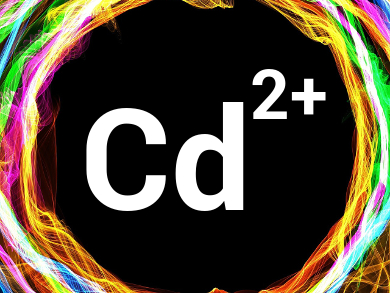Cadmium, although highly toxic, has many industrial applications, such as nickel-cadmium batteries or cadmium-based pigments. To avoid exposure, simple methods to detect cadmium ions are useful. While a number of fluorescent probes have been developed, many are not sufficiently selective for Cd2+ over Zn2+ because of the ions’ similar properties.
Qiang Xu, Chongqing University of Arts and Sciences, China, Lin Xu, East China Normal University, Shanghai, Junhai Huang, China State Institute of Pharmaceutical Industry, Shanghai, and colleagues have synthesized a simple fluorescent probe based on quinoline that selectively binds Cd2+ in solution. The team used a one-step synthesis to prepare the probe that involves reacting 5-hydroxymethyl-8-hydroxyquinoline with 2,6-bis(chloromethyl)pyridine in dimethylformamide (DMF). The resulting ligand forms a fluorescent complex with Cd2+ with an emission maximum at 425 nm.
The researchers tested the selectivity in water and different buffer solutions and found that only Cd2+, but no other tested ions (Co2+, Ag+ , Mg2+, Pb2+, Ni2+, Mn2+, Na+, Hg2+, Cu2+, Li+, Fe2+, Ba2+, Al3+, and Zn2+) caused enhanced fluorescence. The team observed an almost linear relationship between fluorescence intensity and cadmium ion concentration, which means the probe could be used to quantitatively detect Cd2+.
- A selective fluorescent probe for the detection of Cd2+ in different buffer solutions and water,
Zheng Xu, Guoqiang Li, Yuan-Yuan Ren, Hua Huang, Xiaoping Wen, Qiang Xu, Xiaotian Fan, Zhao Huang, Junhai Huang, Lin Xu,
Dalton Trans. 2016.
DOI: 10.1039/C6DT01398H




